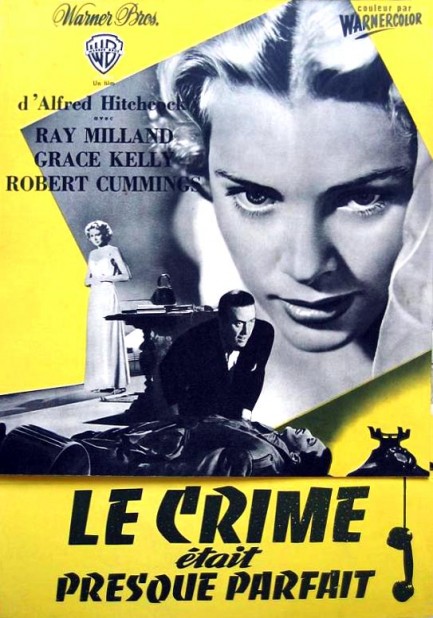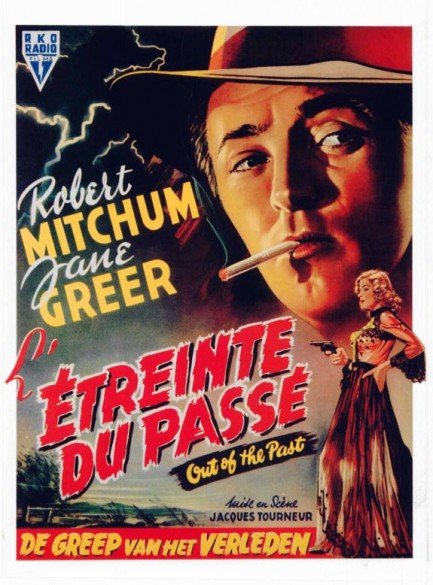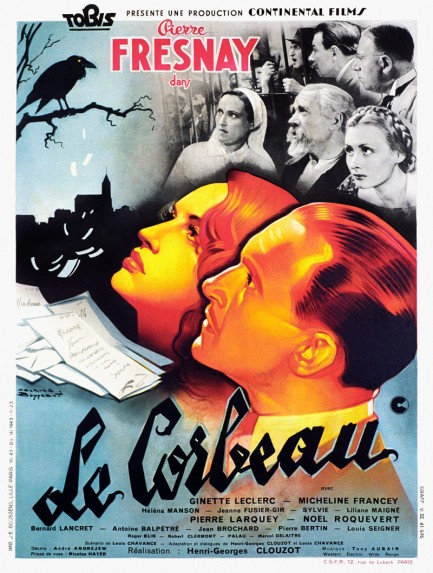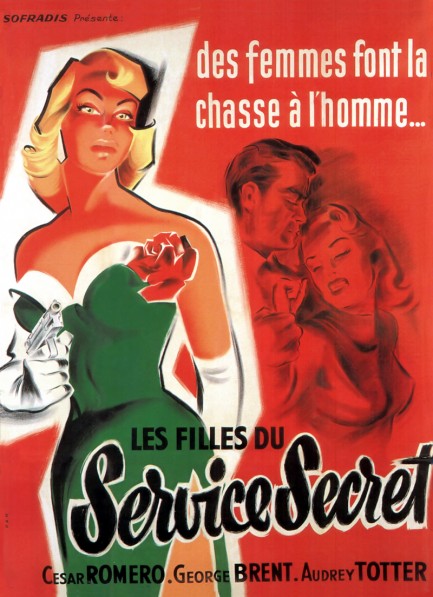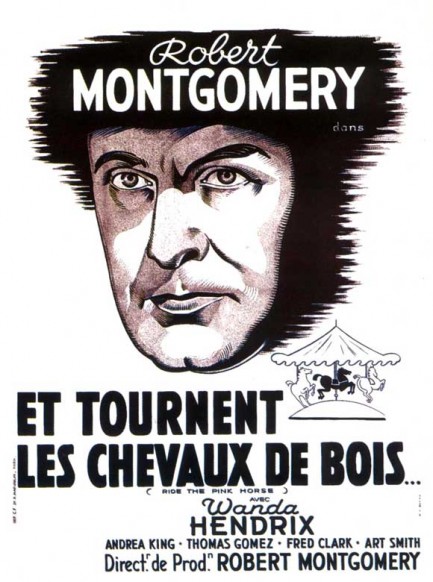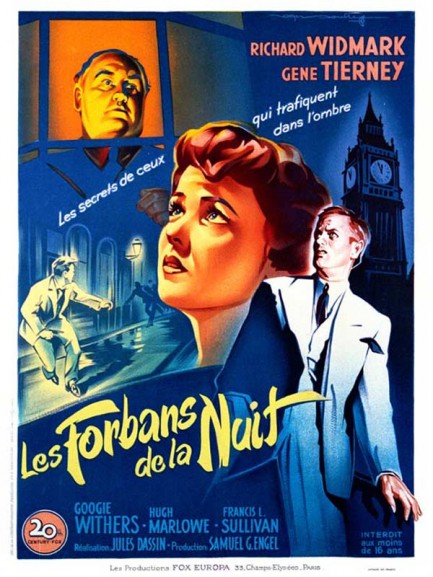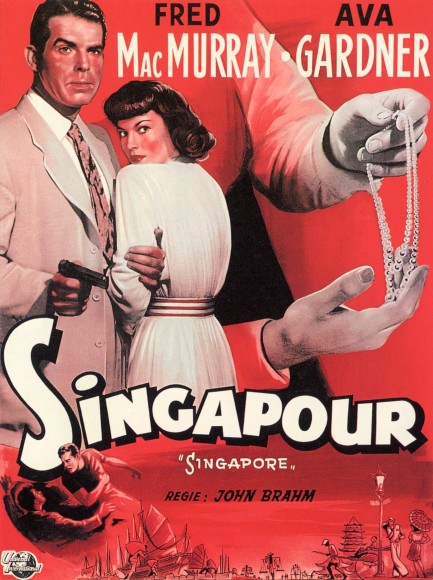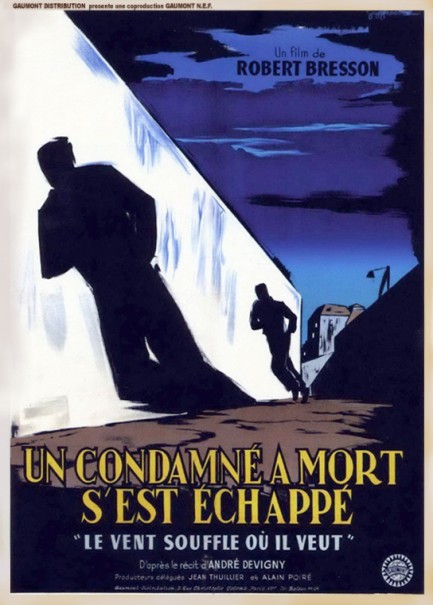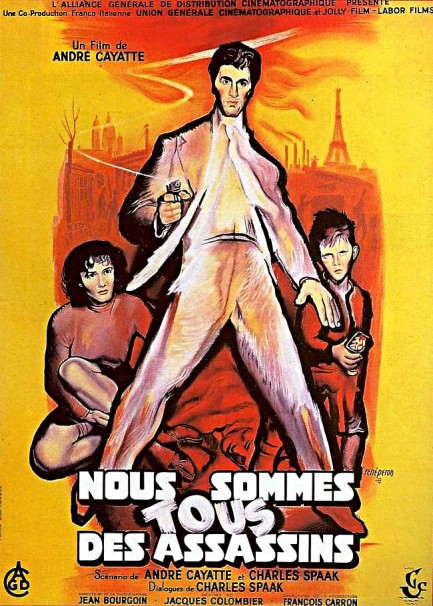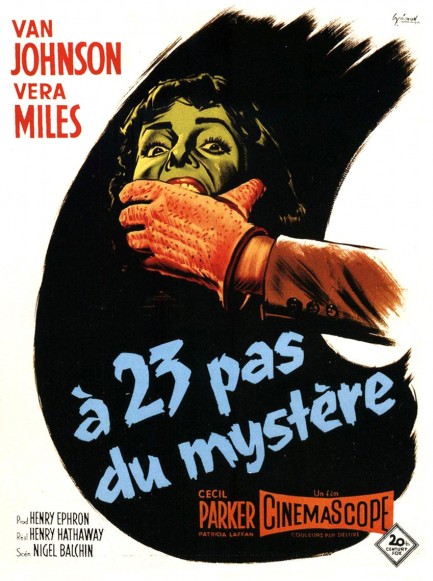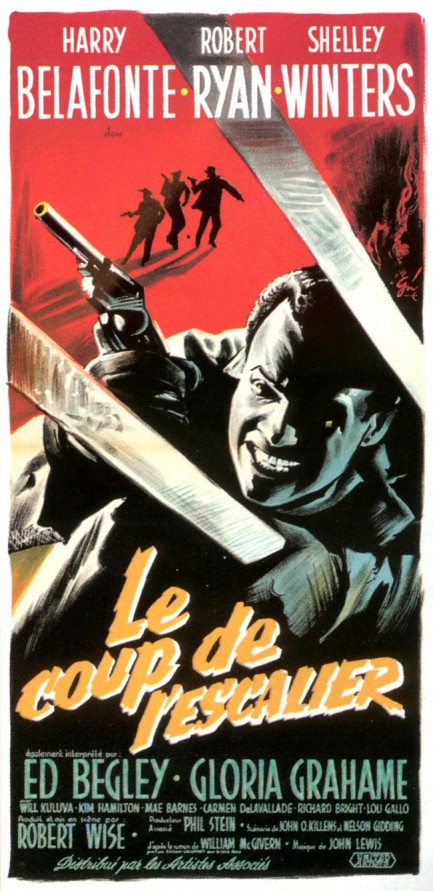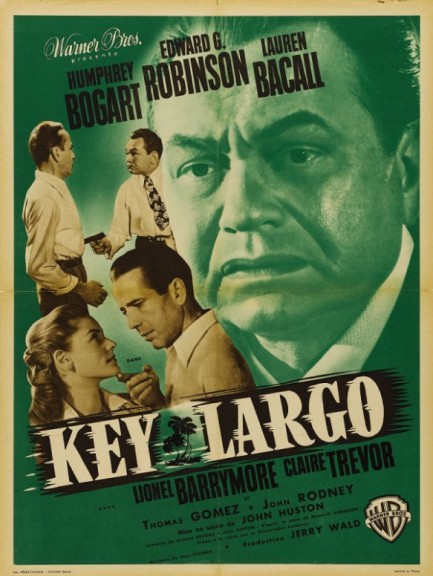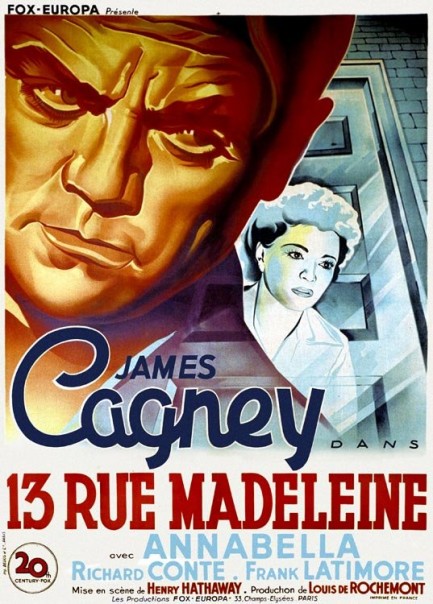 When Hollywood fleshed out source material it often changed the flesh tones too. 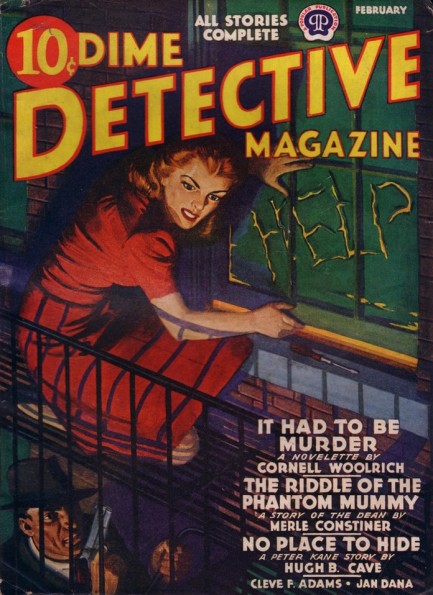
Just a bit more on Rear Window today. The movie was based on Cornell Woolrich's story "It Had To Be Murder," which appeared in Dime Detective Magazine of February 1942. As might be expected story and film are substantially different. Lisa Fremont doesn't exist at all and neither does the insurance company nurse Stella. They were both derived from one character—a valet named Sam who does all the hard work while Jeffries watches from his wheelchair. The relationship between these two is warm, but with strong overtones of status and race, with Jeffries at one point showing his pleasure with Sam by saying, "Go and build yourself a great big two-story whisky punch; you’re as close to white as you’ll ever be." Screenplay choices are always interesting, and we can see the addition of Grace Kelly's Fremont character making sense (though this being Hitchcock, he'd have put a blonde in the movie no matter what, since they represented a fantasy woman for him), but we wish Stella had been left out and Sam kept intact. We understand that changing Jeffries into a rogue photographer from a rich Manhattanite meant taking away his valet, but Sam could have been transformed into the insurance company employee. But that's just our opinion. You can decide for yourself by reading or downloading "It Had To Be Murder" yourself at this link. It's well worth the time.
 Stewart violates the norms of neighborliness and ends up with a mystery on his hands. 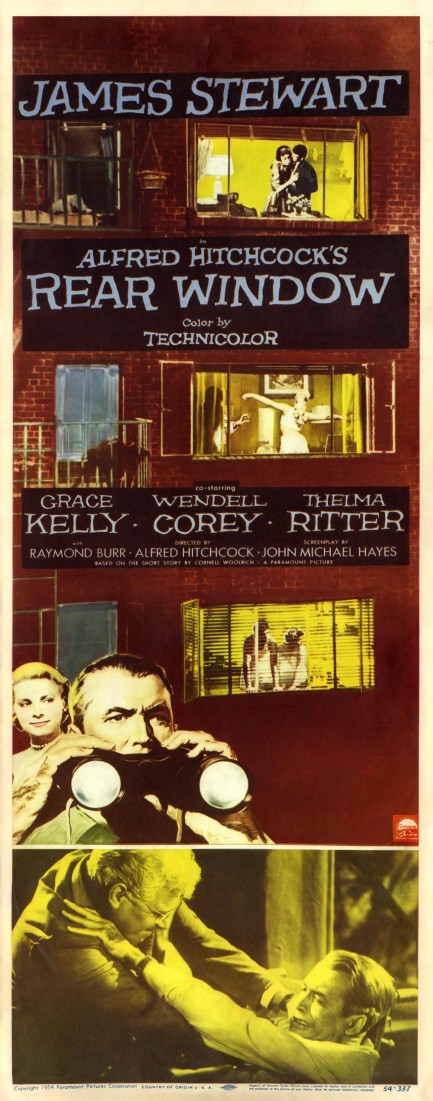 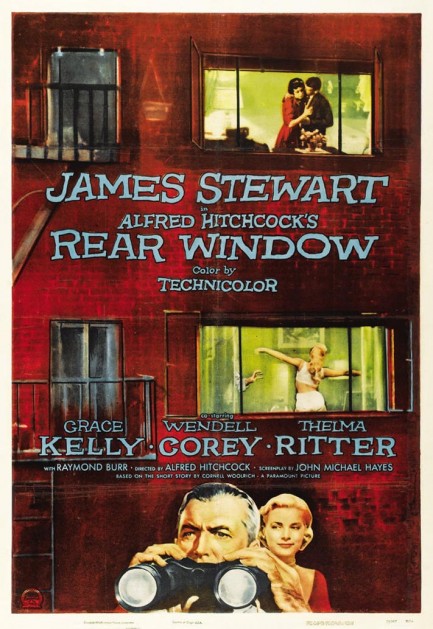
Above are two iconic posters for Alfred Hitchcock’s Rear Window, 1954. This is a great movie, but definitively not a film noir—instead it’s a big Technicolor drama, bright and vibrant in a way movies aren’t today. It’s also only nominally a mystery, as the question is never who is the murder suspect, nor who is the murder victim, but whether there was actually a murder at all. This is one of Hitchcock’s greatest achievements, with James Stewart at his likeable best even as a voyeur, and Grace Kelly fueling the fantasies of male cinemagoers as the perfect girlfriend Lisa Fremont. Is the movie perfect? No. It fumbles its attempt to underline Stewart’s reckless nature, putting him in a wheelchair for the unbelievable act of running onto the middle of a Formula 1 track to get a photo. It also requires the audience to believe he can see all from his apartment, but his neighbors never notice him. Yet Rear Window overcomes those annoyances and is deservedly considered an all-time classic. Seeing it on the big screen as patrons of the Noir City Film Festival will tonight would be a treat, but see it in any case. 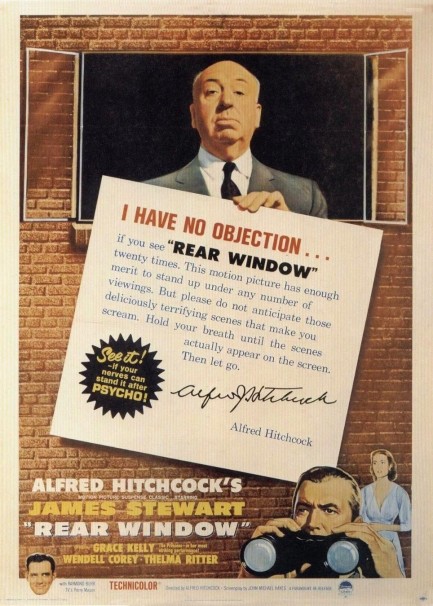
 Even visionary filmmakers sometimes don't see clearly. 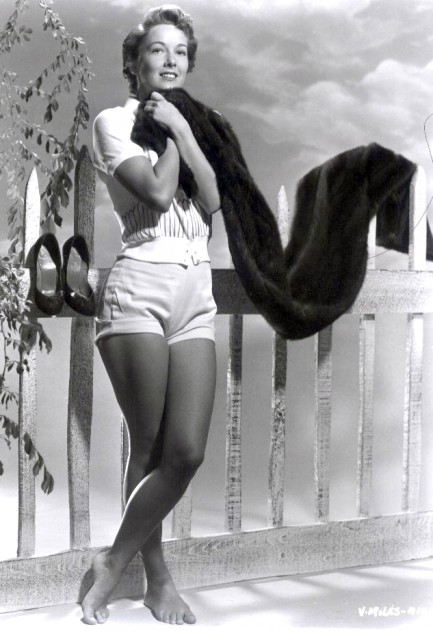
Vera Miles is most famous as the actress who gets to survive Alfred Hitchcock’s Psycho. She worked with Hitchcock on many films, but had other worthy roles, including in The Man Who Shot Liberty Valance, The Wrong Man, and just about every television detective series of the 1970s. She claims she was never able to never please Hitchcock because she wasn’t sexy enough. This shot proves Alfred needed glasses. It’s circa 1955.
 Ralph, this wasn’t what I meant when I said I needed a little pick-me-up. 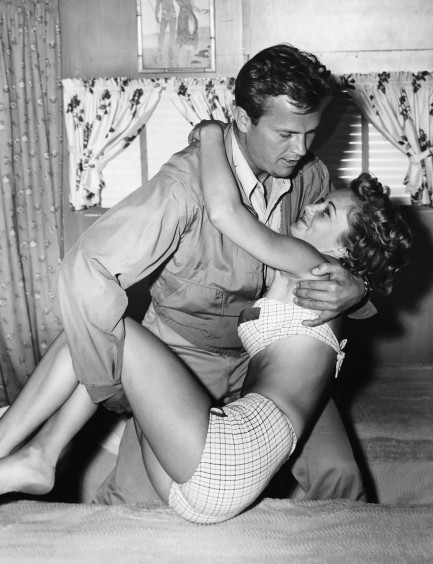
Ralph Meeker and Vera Miles joke around on the Hollywood set of the television series Alfred Hitchcock Presents. The episode they starred in was the series debut “Revenge,” and is considered by many to be the pinnacle of the show’s seven-year run. Meeker would appear in three more episodes of the series and many movies, while Miles would co-star memorably in Hitchcock’s Psycho. The photo dates from 1955.
 The mission statement was simple—take potshots at every star in the firmament. 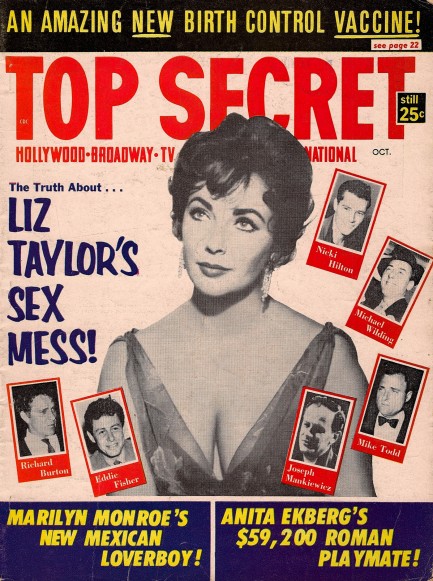
Top Secret is in fine form in this issue from October 1962 as it goes after all the biggest celebrities in Hollywood and Europe. Treading the line between journalism and slander is no easy feat, but take notice—Top Secret’s editors and hacks manage to pull off a high wire act. And of course this was key to the tabloids' modus operandi—they had to present information in a seemingly fearless or even iconoclastic way, yet never actually cross the line that would land them in court. For example, there’s this dig at Frank Sinatra: “Mr. Snarl, Mr. Nasty, Mr. Do-You-Want-A-Belt-In-The-Mouth was as gentle as a lamb. Gone was the usual sneer, the wise-guy leer. Was this the same surly singer whose idea of a good morning’s exercise had been to watch his bodyguards work over a photographer?” Grace Kelly takes a few arrows: “It’s a pretty good bet that the immediate bust-up of the marriage won’t come in the next few months, but it sure as shooting looks like her six-year reign as the glamorous princess of that silly little kingdom on the Mediterranean is going to blow up in her prim face.” Christina Paolozzi gets roughed up thusly: “If anything, Christina in the buff is proof that clothes are an underdeveloped girl’s best friends. There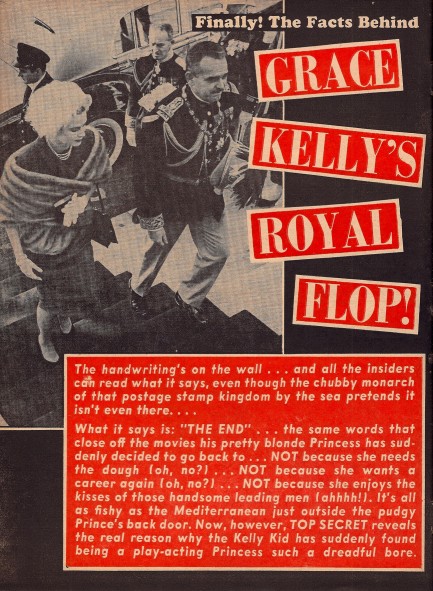 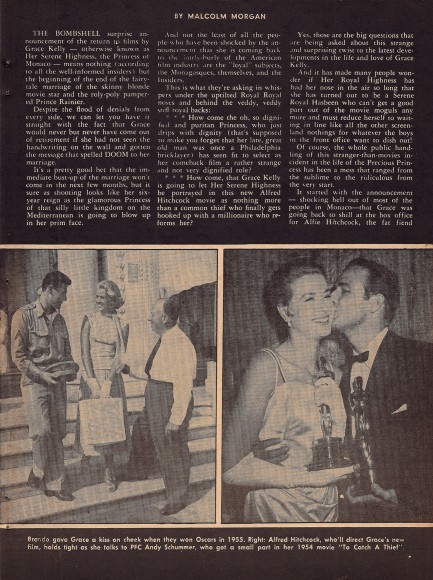 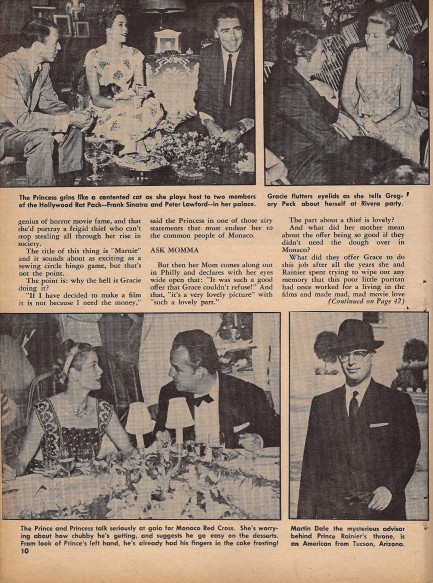 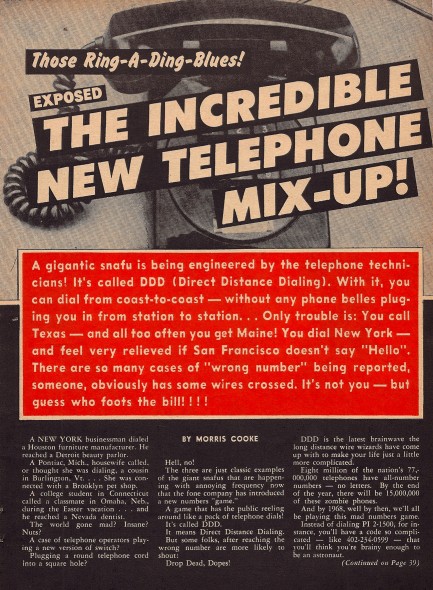 the Countess stands with a pleased expression that seems to say, ‘Aren’t I something, Mister?’ But all it takes is one quick look to see that there isn’t really anything to get excited about—unless [you love] barbecued spareribs.” the Countess stands with a pleased expression that seems to say, ‘Aren’t I something, Mister?’ But all it takes is one quick look to see that there isn’t really anything to get excited about—unless [you love] barbecued spareribs.” Anita Ekberg receives this treatment: “[La Dolce Vita] was something like a peek into the boudoir antics of its star—the gal with the fantastic superstructure that looks like nothing less than two tugboats pulling a luxury liner into port.” And what tabloid would be complete without Marilyn Monroe? Top Secret says she’s dating writer José Bolaños (who the magazine calls a Mexican jumping bean). Editors opt to unveil the news this way: “It seems that this bold bundle of blonde has suddenly gone on a strange Mexican hayride!!! Si, amigo, MEXICAN!” And then there’s cover star Elizabeth Taylor: “And she acted wilder than ever, satisfying all her most urgent urges for Dickie in the most wide open ways. [She] had jumped from tragedy right into disgrace by having a wild fling with Eddie Fisher a mere six months after hubby Mike Todd had been planted six feet under. ‘Mike is dead, and I’m alive,’ she said cynically after running off for a riotous romp in the fall of 1958 with the guy who just then happened to be married to Debbie Reynolds. 'I’m not taking anything away from Debbie, because she never really had it,' luscious Liz sneered." This issue of Top Secret is, succinctly put, a clinic in mid-century tabloid writing—alliterative and spicy, insinuative and sleazy, but never quite legally actionable. How could Ekberg argue that the tugboat similie wasn’t interpretable as a compliment? Could Christina Paolozzi deny that her ribs show? Could Sinatra claim that his bodyguards never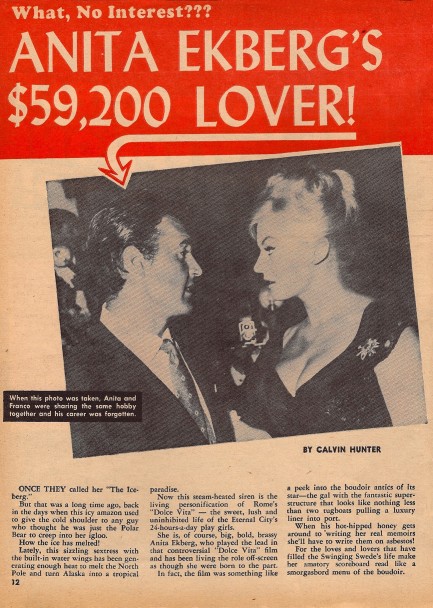 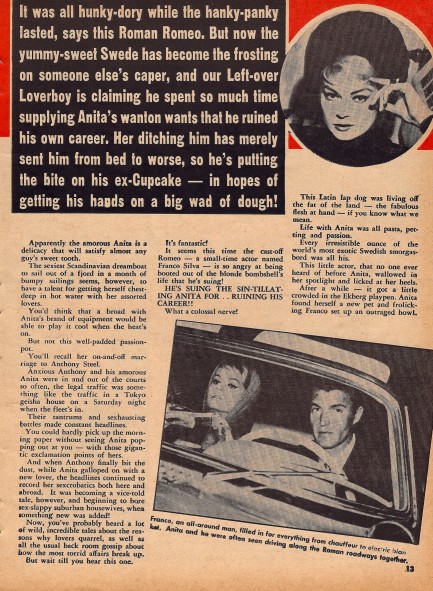 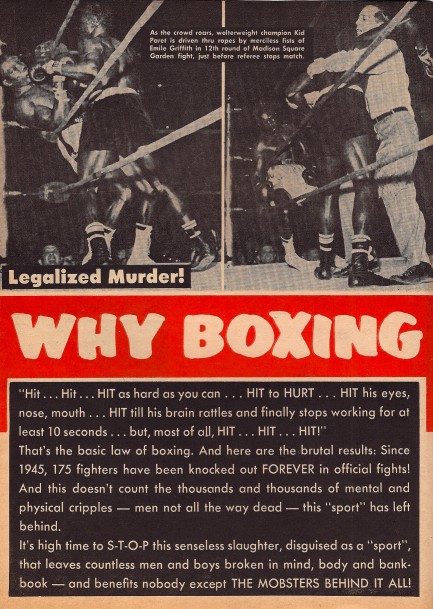 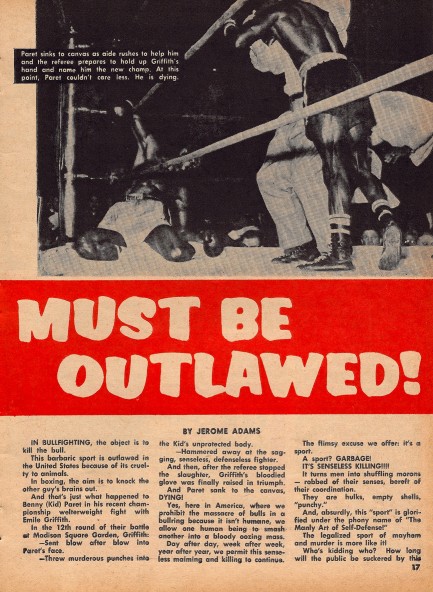 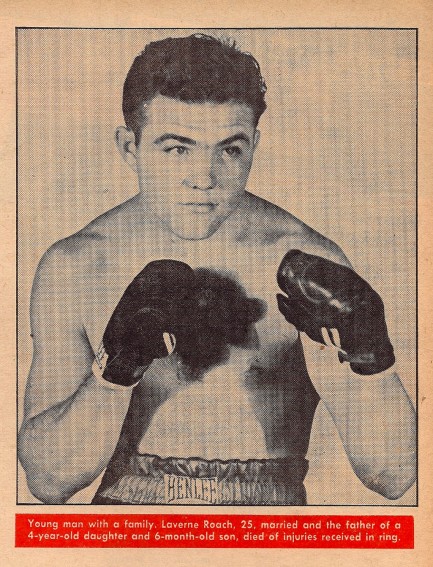 slugged a photographer? The magazine skirts the edge a bit with Taylor—did you catch how the editors paired “urges for Dick(ie)” with “wide open ways”?—but was she misquoted or truly slandered? Highly doubtful. Top Secret is pure, trashy genius. Magazines don’t have such writing anymore, and that’s probably a good thing—but it sure is fun to look back at how things were. More scans below. slugged a photographer? The magazine skirts the edge a bit with Taylor—did you catch how the editors paired “urges for Dick(ie)” with “wide open ways”?—but was she misquoted or truly slandered? Highly doubtful. Top Secret is pure, trashy genius. Magazines don’t have such writing anymore, and that’s probably a good thing—but it sure is fun to look back at how things were. More scans below.
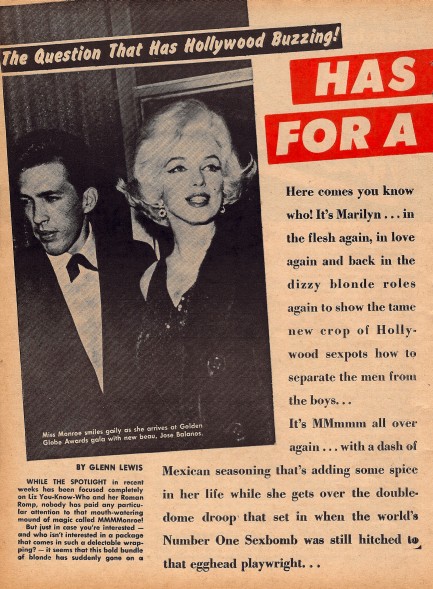 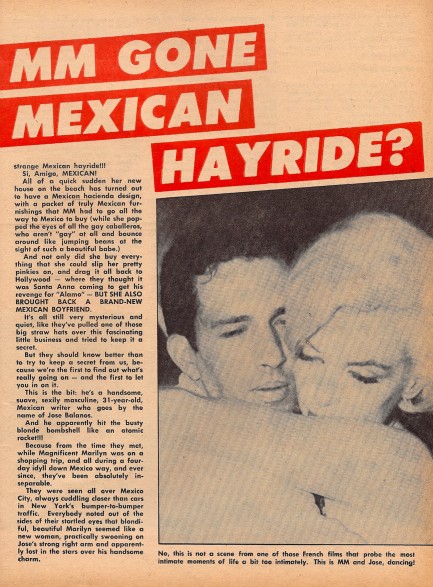 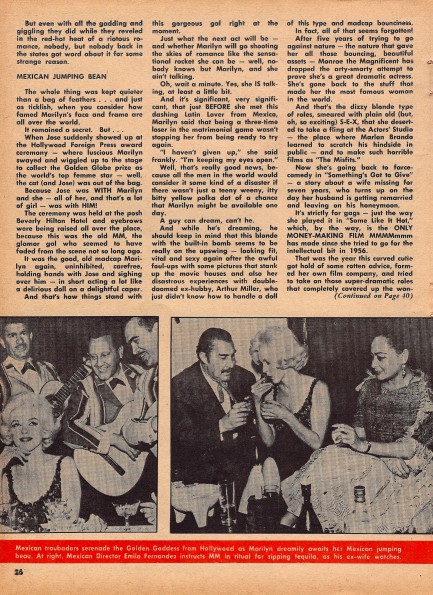 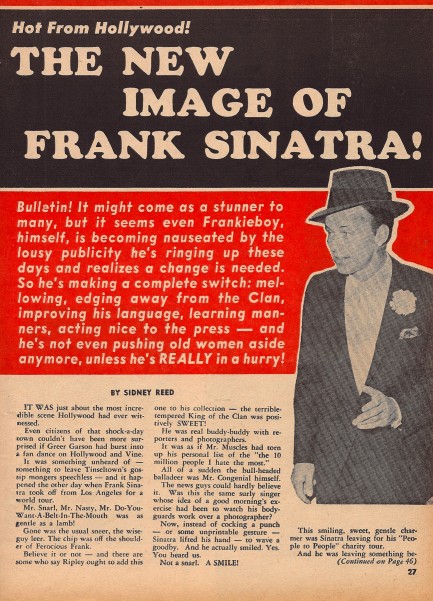 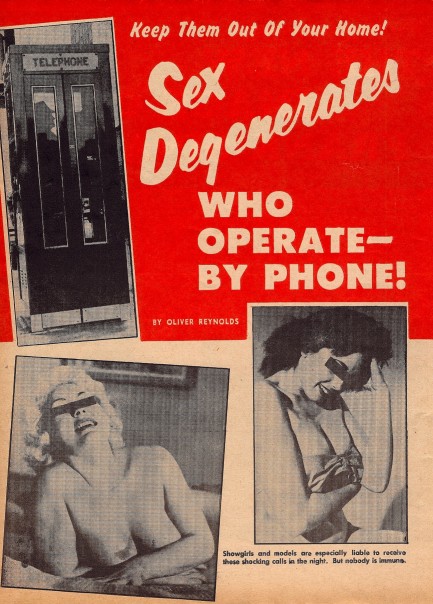 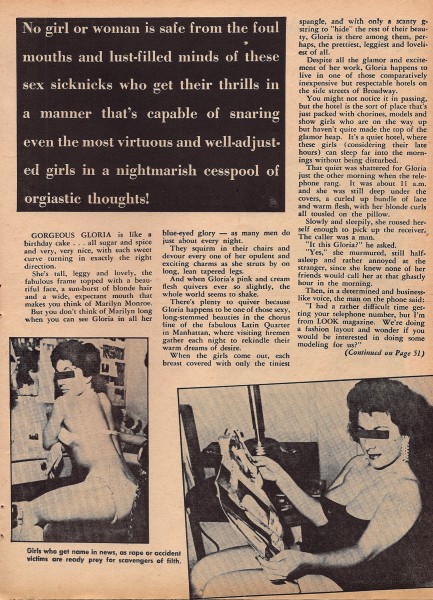 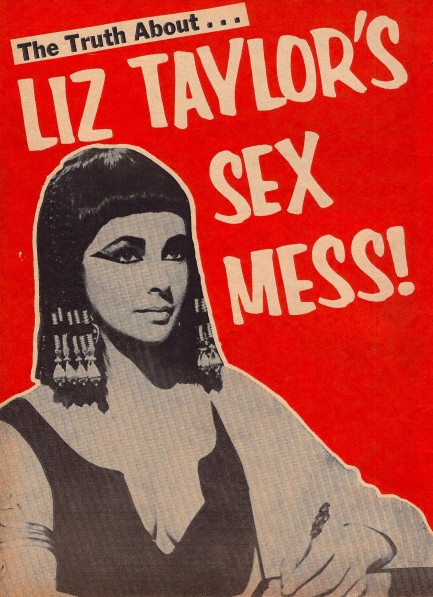 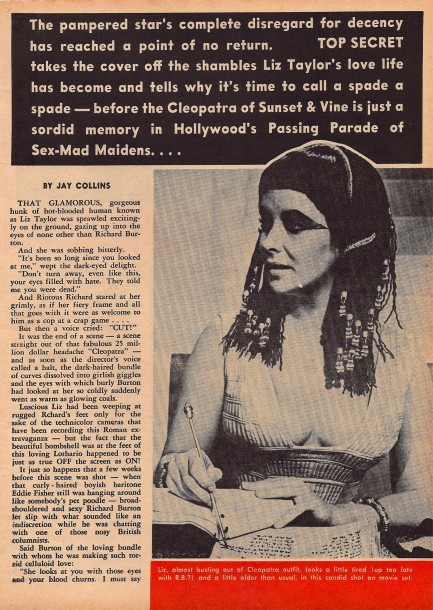 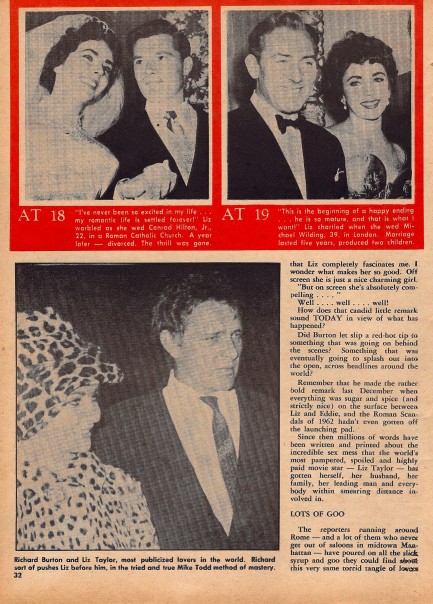 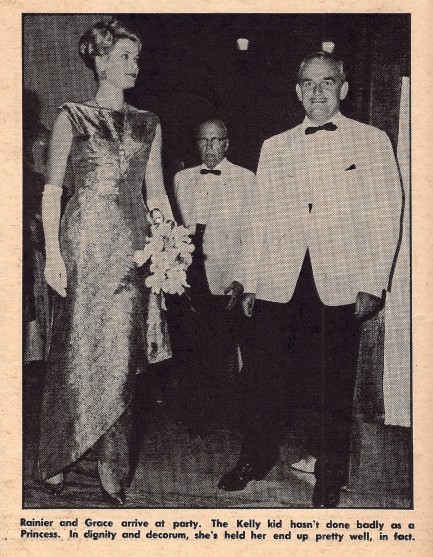 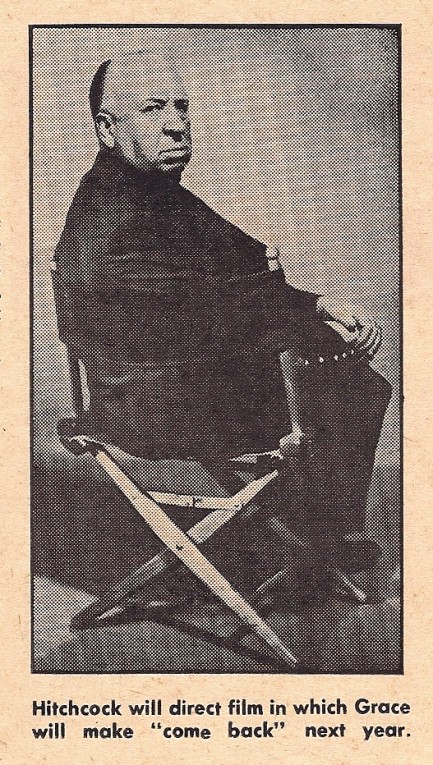 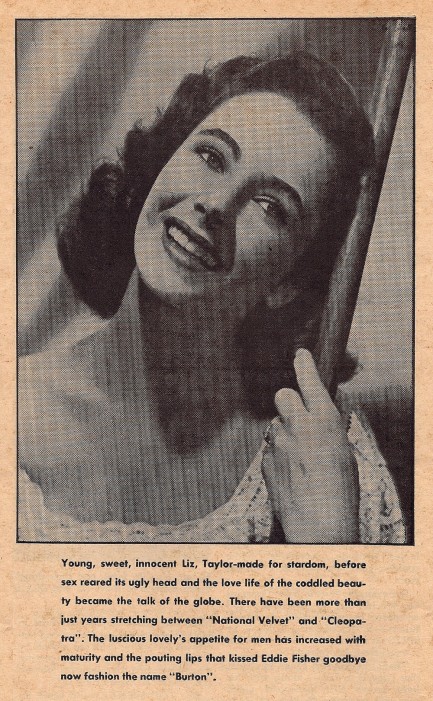 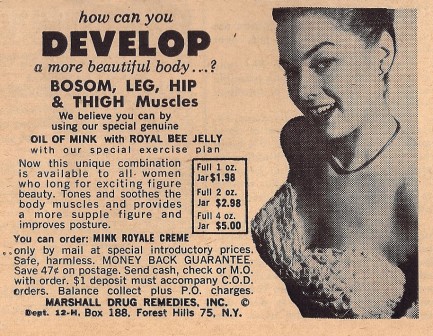 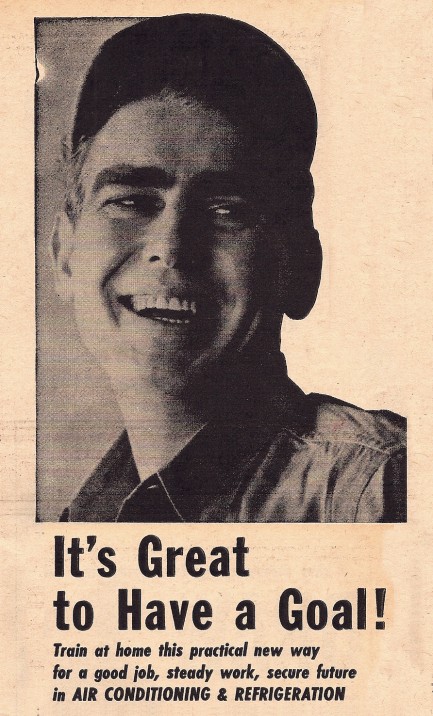
 Destined to reach classic status. 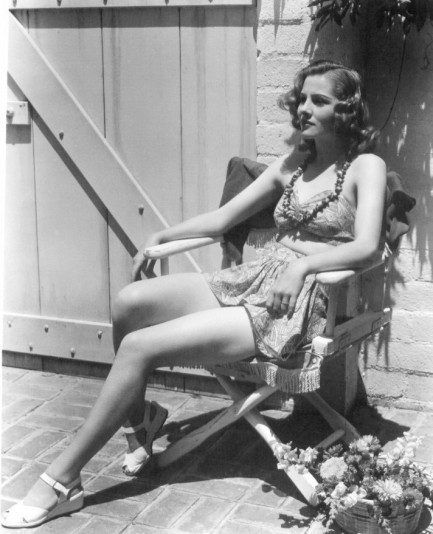
When Joan Fontaine decided to try her luck in Hollywood her mother reportedly refused to let her use the family’s name—de Havilland, which was being used by her actress sister Olivia—so she chose Fontaine as her last name. After a slow start earning good roles she scored the coveted part of Mrs. De Winter in Alfred Hitchcock’s 1940 Daphne du Maurier adaptation Rebecca and was nominated for an Academy Award. She didn’t win that one, but the next year took home the statuette for her role in Suspicion, becoming the only performer to win an Oscar for acting in a Hitchcock film. From there her career took off, and she worked steadily through the 1940s, 1950s, and 1960s. Ironically, when her mother—a former actress—decided to rekindle her own career she did so under the stage name Lillian Fontaine. Of her famous sister, Joan Fontaine once said, “I married first, won the Oscar before Olivia did, and if I die first, she’ll undoubtedly be livid because I beat her to it.” The third part of that quip came true when Fontaine—née Joan de Beauvoir de Havilland—died of natural causes Sunday in Carmel-by-the-Sea, California.
 The truth of a man is always revealed by the shape of the shadow he casts. 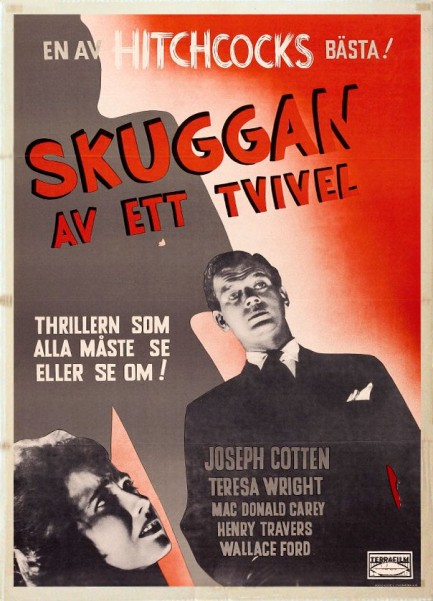
Above, a Swedish poster for Alfred Hitchcock’s psychological thriller Skuggan av ett tvivel, staring Joseph Cotten and Teresa Wright, and originally released in the U.S. as Shadow of a Doubt. The Swedish premiere of the movie was today in 1943, which might be a surprising fact for some, considering the ongoing calamity that was World War II, but Sweden was neutral during the conflict—or perhaps a better way to phrase it is to say it was occasionally helpful to both the Axis and Allies. Anyway, this is an excellent poster that tells the entire story of the film—an outwardly normal man is really a monster, and in the art casts a misshapen shadow that only one young, intuitive woman can see. The line across the top says, “One of Hitchcock’s best!” Of course, he would rise to even greater heights during the 1950s and 1960s, but some still regard this as top five Hitchcock. Us? Not so much, but see it and judge for yourself. 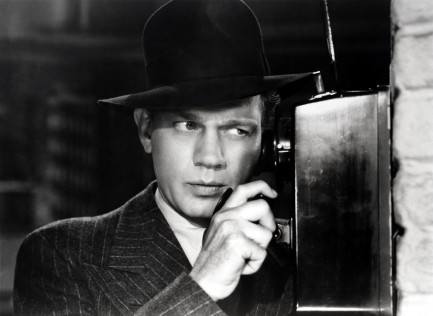 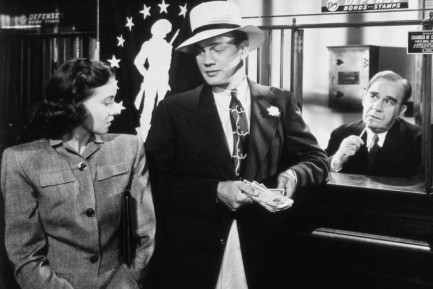 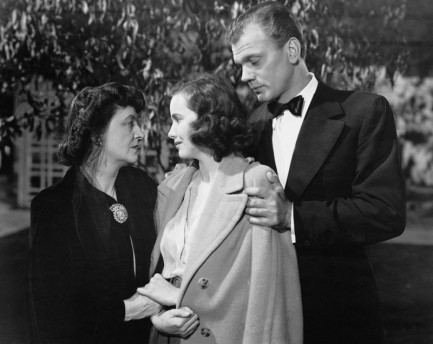 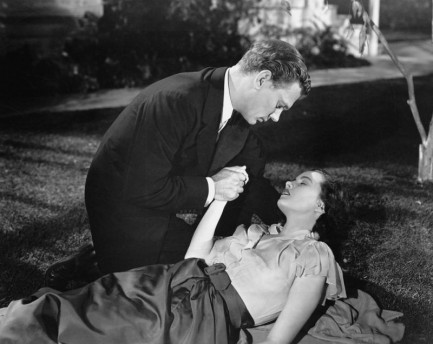 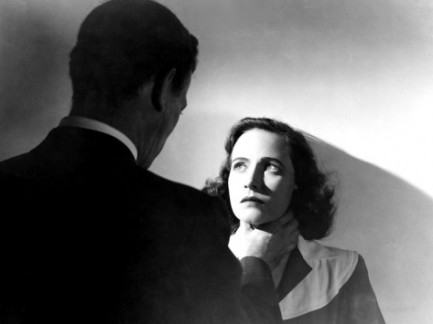
 Hitchcock presents thirteen excellent tales of terror. 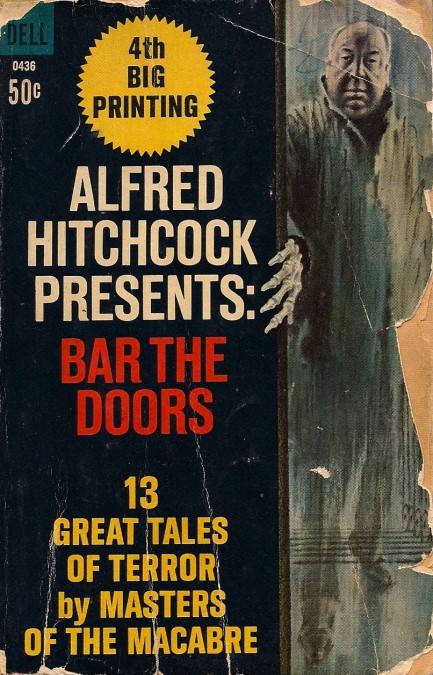
Alfred Hitchcock Presents: Bar the Doors contains some of the best macabre fiction we’ve ever read. The collection begins with H.G. Wells’ violent, oppressive tale of murder and voodoo in Sierra Leone “Pollock and the Porroh Man.” The story was written in 1895 and comes with the sort of classical styling you might expect, but with a surprisingly modern pacing as the first paragraph finds the lead character caught in the middle of a stabbing. Pollock pulls a gun to defend himself and the Porroh Man flees, but not before casting an infuriated gaze back that promises revenge. Little does Pollock know that revenge can take supernatural form. You’d expect the tale to be laced with racism, and it is—this line from the first paragraph is simply amazing: “At any rate, the Porroh Man stabbed the woman through the heart as though he had been a mere low class Italian.” African characters fare far worse. However in this context of mortal struggle between a voodoo conjurer and a self-entitled Englishman, racism comes off as impotence against overwhelming powers. 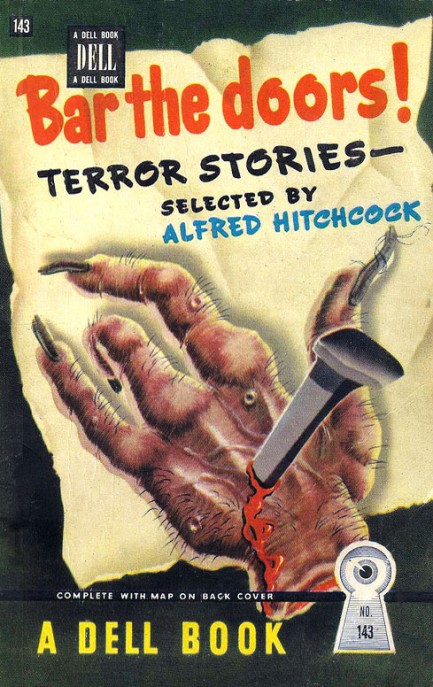 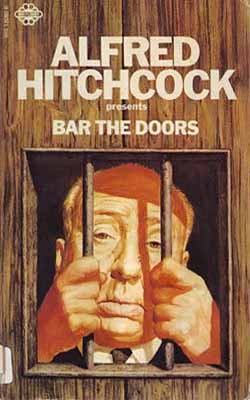 “Pollock and the Porroh Man” was written four years before Joseph Conrad’s “Heart of Darkness.” Conrad’s work is a novella-length masterpiece, whereas Wells’ story is under ten pages, but Wells is quite successful at exploring a different heart of darkness by bringing to life the deepest colonial fear, the one chortling, brandy-swilling men laugh at as long as they’re in a well lit room bolstered by their own numbers—the fear that munitions and cruelty will suffice to maintain control only insofar as natives aren’t pushed too far. But when that day comes, when native peoples have had enough, then colonials will find that voodoo and magic are real, that technology is truly the illusion, and bloody payment is due for crimes committed against people that wanted only to be left alone. “Pollock and the Porroh Man” was written four years before Joseph Conrad’s “Heart of Darkness.” Conrad’s work is a novella-length masterpiece, whereas Wells’ story is under ten pages, but Wells is quite successful at exploring a different heart of darkness by bringing to life the deepest colonial fear, the one chortling, brandy-swilling men laugh at as long as they’re in a well lit room bolstered by their own numbers—the fear that munitions and cruelty will suffice to maintain control only insofar as natives aren’t pushed too far. But when that day comes, when native peoples have had enough, then colonials will find that voodoo and magic are real, that technology is truly the illusion, and bloody payment is due for crimes committed against people that wanted only to be left alone. There are other great stories in the collection—F. Marion Crawford’s “The Upper Berth” tells the tale of a man who has an unwanted supernatural visitor in his stateroom every night; Alfred Noyes’ “Midnight Express” preys on readers’ classic misgivings about deserted tube platforms; Ambrose Bierce’s “The Damned Thing” tackles the Lovecraftian theme of an other-dimensional beast that cannot be seen; and McKnight Malmar’s “The Storm” might be of interest to those who just experienced last night’s thunderous downpours in Great Britain. In fact, the entire collection is stormy night reading. It was first published in 1946 and reprinted numerous times, as the alternate covers above reveals. Highly recommended.
 Only the good go to sleep at night. 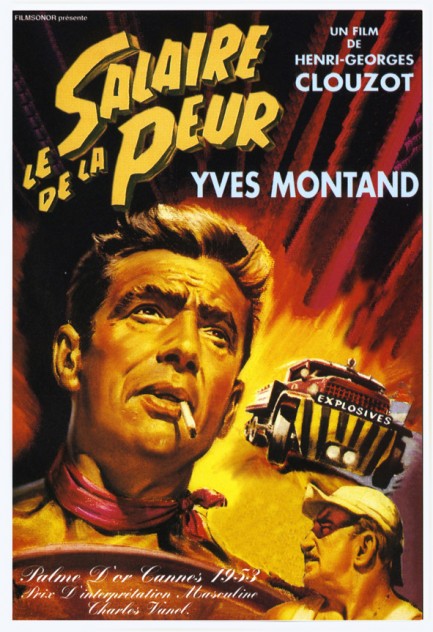
The French coined the term film noir, so it seems only fitting to feature a collection of French posters celebrating the genre. Above and below are fifteen examples promoting films noir from France, Britain, and the U.S., representing some of the best ever produced within the art form, as well as some less celebrated examples that we happen to love. Of those, we highly recommend seeing Le salaire de la peur, for which you see the poster above, and Ride the Pink Horse, below, which played as Et tournent les chevaux de bois in France. Just a word about those films (and feel free to skip ahead to the art, because really, who has time these days to listen to a couple of anonymous internet scribes ramble on about old movies?). 1953’s Le salaire de la peur is about a group of men stranded in an oil company town in the mountains of Latin America. In order to earn the wages to get out, four of them agree to drive two trucks filled with nitroglycerine over many miles of dangerous terrain. The idea is to use the chemicals to put out a raging oil well fire that is consuming company profits by the second, but of course the film is really about whether the men can even get there alive. Le salaire de la peur was critically praised when released in Europe, but in the U.S., political factions raised their ugly heads and got censors to crudely re-edit the prints so as to reduce the movie’s anti-capitalist (and by extension anti-American) subtext. The movie was later remade by Hollywood twice—once in 1958 as Hell’s Highway, and again in 1977 as Sorcerer. The original is by far the best.
1947’s Ride the Pink Horse is an obscure noir, but a quintessential one, in our opinion. If many noirs feature embittered World War II vets as their anti-heroes, Robert Montgomery’s Lucky Gagin is the bitterest of them all. He arrives in a New Mexico border town on a quest to avenge the death of a friend. The plot is thin—or perhaps stripped down would be a better description—but Montgomery’s atmospheric direction makes up for that. Like a lot of mid-century films featuring ethnic characters, the most important one is played by a white actor (Wanda Hendrix, in a coating of what looks like brown shoe polish). It's racist, for sure, but within the universe of the film Lucky Gagin sees everyone around him only as obstacles or allies—i.e., equals within his own distinct worldview. So that makes up for it. Or maybe not. In any case, we think Ride the Pink Horse is worth a look. Thirteen more posters below.
 There are eight million stories in The Naked City. 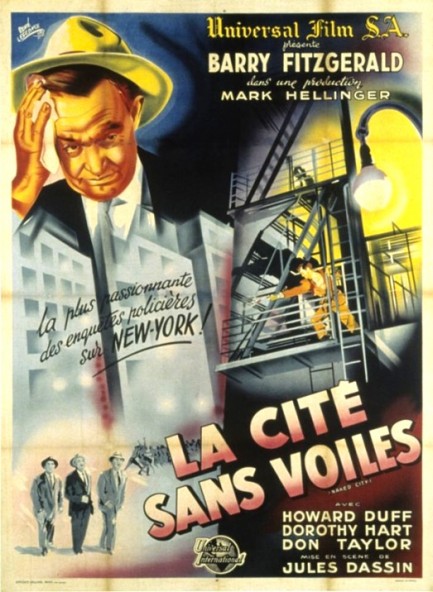
Above: a great French poster for Jules Dassin’s film noir La cité sans voiles, which was originally produced in the U.S. and called The Naked City. Dassin, who apprenticed under Alfred Hitchcock, was one of the quintessential noir directors, also helming 1947’s Brute Force, 1949’s Thieves’ Highway, and 1950’s spectacular Night and the City. His career in the U.S. was ruined when he was named during the anti-communist hysteria of the 1950s, forcing him to live the rest of his life in more tolerant France. It was there that he made the 1955 heist thriller Du rififi chez les hommes, aka Rififi, possibly his best—and best remembered—work. The Naked City, while not perfect, is certainly a significant piece, due to both its style and substance. Its tagline has become part of the American lexicon: "There are eight million stories in the naked city; this has been one of them." In 2007 the U.S. Library of Congress agreed that The Naked City was a special achievement when it selected the film for preservation in the National Film Registry for being “culturally, historically and aesthetically signifitcant.” For Dassin, who'd been persecuted for a political belief, maybe the award was some small consolation. If so he didn't get to enjoy it long—he died the next year. La cité sans voiles premiered in France today in 1949.
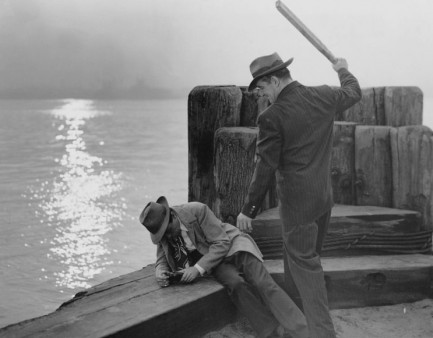  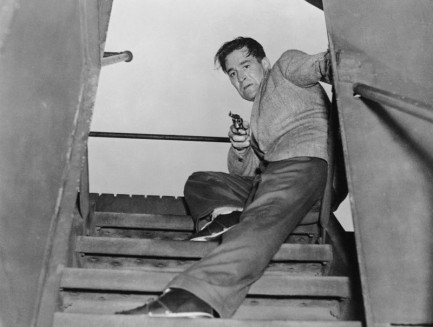 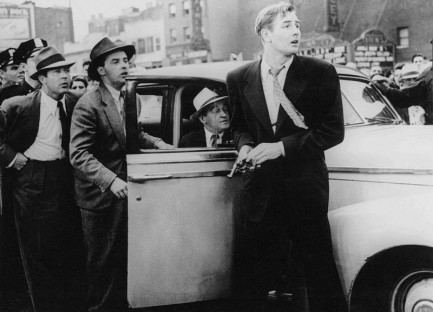
 |  |
|
 |

The headlines that mattered yesteryear.
1939—Batman Debuts
In Detective Comics #27, DC Comics publishes its second major superhero, Batman, who becomes one of the most popular comic book characters of all time, and then a popular camp television series starring Adam West, and lastly a multi-million dollar movie franchise starring Michael Keaton, then George Clooney, and finally Christian Bale. 1953—Crick and Watson Publish DNA Results
British scientists James D Watson and Francis Crick publish an article detailing their discovery of the existence and structure of deoxyribonucleic acid, or DNA, in Nature magazine. Their findings answer one of the oldest and most fundamental questions of biology, that of how living things reproduce themselves. 1967—First Space Program Casualty Occurs
Soviet cosmonaut Vladimir Komarov dies in Soyuz 1 when, during re-entry into Earth's atmosphere after more than ten successful orbits, the capsule's main parachute fails to deploy properly, and the backup chute becomes entangled in the first. The capsule's descent is slowed, but it still hits the ground at about 90 mph, at which point it bursts into flames. Komarov is the first human to die during a space mission. 1986—Otto Preminger Dies
Austro–Hungarian film director Otto Preminger, who directed such eternal classics as Laura, Anatomy of a Murder, Carmen Jones, The Man with the Golden Arm, and Stalag 17, and for his efforts earned a star on Hollywood's Walk of Fame, dies in New York City, aged 80, from cancer and Alzheimer's disease. 1998—James Earl Ray Dies
The convicted assassin of American civil rights leader Martin Luther King, Jr., petty criminal James Earl Ray, dies in prison of hepatitis aged 70, protesting his innocence as he had for decades. Members of the King family who supported Ray's fight to clear his name believed the U.S. Government had been involved in Dr. King's killing, but with Ray's death such questions became moot.
|

|
|

It's easy. We have an uploader that makes it a snap. Use it to submit your art, text, header, and subhead. Your post can be funny, serious, or anything in between, as long as it's vintage pulp. You'll get a byline and experience the fleeting pride of free authorship. We'll edit your post for typos, but the rest is up to you. Click here to give us your best shot.

|
|















 the Countess stands with a pleased expression that seems to say, ‘Aren’t I something, Mister?’ But all it takes is one quick look to see that there isn’t really anything to get excited about—unless [you love] barbecued spareribs.”
the Countess stands with a pleased expression that seems to say, ‘Aren’t I something, Mister?’ But all it takes is one quick look to see that there isn’t really anything to get excited about—unless [you love] barbecued spareribs.”



 slugged a photographer? The magazine skirts the edge a bit with Taylor—did you catch how the editors paired “urges for Dick(ie)” with “wide open ways”?—but was she misquoted or truly slandered? Highly doubtful. Top Secret is pure, trashy genius. Magazines don’t have such writing anymore, and that’s probably a good thing—but it sure is fun to look back at how things were. More scans below.
slugged a photographer? The magazine skirts the edge a bit with Taylor—did you catch how the editors paired “urges for Dick(ie)” with “wide open ways”?—but was she misquoted or truly slandered? Highly doubtful. Top Secret is pure, trashy genius. Magazines don’t have such writing anymore, and that’s probably a good thing—but it sure is fun to look back at how things were. More scans below. 

























 “Pollock and the Porroh Man” was written four years before Joseph Conrad’s “Heart of Darkness.” Conrad’s work is a novella-length masterpiece, whereas Wells’ story is under ten pages, but Wells is quite successful at exploring a different heart of darkness by bringing to life the deepest colonial fear, the one chortling, brandy-swilling men laugh at as long as they’re in a well lit room bolstered by their own numbers—the fear that munitions and cruelty will suffice to maintain control only insofar as natives aren’t pushed too far. But when that day comes, when native peoples have had enough, then colonials will find that voodoo and magic are real, that technology is truly the illusion, and bloody payment is due for crimes committed against people that wanted only to be left alone.
“Pollock and the Porroh Man” was written four years before Joseph Conrad’s “Heart of Darkness.” Conrad’s work is a novella-length masterpiece, whereas Wells’ story is under ten pages, but Wells is quite successful at exploring a different heart of darkness by bringing to life the deepest colonial fear, the one chortling, brandy-swilling men laugh at as long as they’re in a well lit room bolstered by their own numbers—the fear that munitions and cruelty will suffice to maintain control only insofar as natives aren’t pushed too far. But when that day comes, when native peoples have had enough, then colonials will find that voodoo and magic are real, that technology is truly the illusion, and bloody payment is due for crimes committed against people that wanted only to be left alone.

